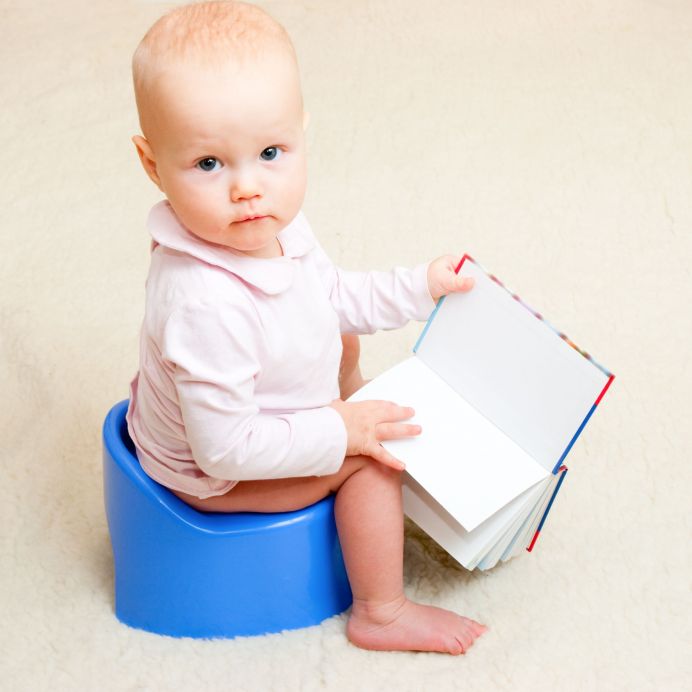Our last post gave you the real deal about birth order:
First-born kids tend to have bigger vocabularies and higher IQs (mostly because they got a lot more one-on-one interaction with Mom and Dad back when they were the only game in town), while later-born kids tend to develop more creative and less verbal ways to get and keep your attention (mostly because if they didn’t, their well-spoken older siblings would gladly keep it all to themselves).

If you can remember to keep that basic knowledge in mind whenever you’re interacting with your offspring, it can be a lot easier to make sure you’re giving everyone a fair amount of attention, as well as the right kind of attention for their ages and developmental levels.
And the whole family will be a lot happier as a result.
Sprinkle some of these cool communication maneuvers into your daily play activities to help all of your kids get the most out of them, regardless of who was born first.
1. Book Reading
If you’re like us, your older child loves demands being read to – but these days isn’t so interested in those simple, cardboard “baby books” that would be perfect for your younger one to flip through. But don’t worry. Even if you don’t have time to read a child-size stack of books to each kid separately, these tips can help everyone benefit from reading the same book together.
Older kids:
- Provide explanations. Even though it’s easy for you to understand why The Beast was so grumpy (trying to land a date when you’re feeling self-conscious about an excessive body hair problem is never fun), the feelings and motivations that drive characters’ behaviors are not always so readily obvious to children. Explain aspects of the story that are unspoken to help kids connect the dots.
- Go further. Use the story to start conversations. “What do you think will happen next?” “Would you have traded places with Daddy to go live with The Beast?”
Younger kids:
- Name the pictures. Take a second to point out objects in the book’s illustrations to help your second-born learn words.
- Provide even more explanations. Elaborate on aspects of the illustrations to remind your child of basic facts, like that dogs say “Ruff Ruff,” or that fried egg yolks are yellow. ((Not always applicable. Thanks for nothing, Dr. Seuss.))
- Use gestures. To help underscore the ideas you want communicated, you can point to objects in the illustrations when you say their names, or pantomime actions when you say the related word (like making a stirring gesture when you say “stir”).
2. Baking or Cooking
Baking can be pretty challenging when you have more than one child (or if you’re like those snooty Top Chef contestants who “don’t do desserts”). If you’re like us, you tend to plop both of the kids on top of the counter and then spend at least half of your energy trying to make sure nobody falls. But with these tips, baking as a family can be tons of fun, and super educational too.
Older kids:
- Provide explanations. Read the recipe out loud and explain how each step you do relates to the information in the text. Include more advanced details in your explanations, like how water bubbles when it gets hot, or the scientific function of baking powder. ((Note to selves: Google the scientific function of baking powder.))
- Talk about numbers. Point out the measurements listed in the recipe and how they relate to the tools you are using. The more you introduce numbers into conversation now, the better equipped your kids will be to tackle math problems in school later on.
- Let the big kid help. Give your child more advanced tasks – packing brown sugar, leveling flour, cracking eggs – to further develop both cooking and fine motor skills.
Younger kids:
- Name your tools. Tell your kid the names of all of the unfamiliar tools you use – spatulas, measuring spoons, sporks, butter churns, etc. – to help with learning words.
- Provide even more explanations. Narrate the baking activity by giving explanations of what you are doing for each step along the way.
- Let the little one help too. You can give younger kids simpler tasks like stirring and scooping to help develop cooking and fine motor skills. Just know that before this thing is over, you will have a mess on your hands.
3. Outdoor Play
When you venture outdoors with your brood, just keeping your different-aged kids corralled and within eyesight can be a challenge. But by creating some fun outdoor activities that everyone can get into, your kids can get some fresh air – and some funky fresh developmentally-appropriate educational interaction as well.
Older kids:
- Have an adventure. Develop imagination and pretend play skills by encouraging children to think of a simple walk through the park or around your backyard as an exciting adventure – you can be pirates out looking for treasure, astronauts exploring a distant planet or bargain hunters trying to maneuver your awkwardly oversized shopping carts through the mindless mass of bodies at Costco.
- Map it. Develop spatial skills by making a basic map of your outdoor space and challenging your older child to use it to find landmarks.
Younger kids:
- Name the scenery. Name unfamiliar aspects of the outdoor scenery to help your babbler learn more words. “Oh look. There’s a Yeti.”
- Talk about it. Use the things you see to start conversations. Your baby will find just about anything you explain interesting, and when you think about it, there’s lots you can explain about everything. Filibustering about something as simple as a leaf is easier than you might think – “It’s green, it has veins, its edges are all pointy, it fell off this tree, you can tear it like this…” – and it’s great practice for you if you ever decide you’d like to shut down the government for a while.
- Have a more basic adventure. Go bug hunting!
Got any of your own ideas for how to get different-aged kids involved, entertained and educated when they play together? Share them in the comments below, and maybe someday all of our kids could become friends. Friends who ride majestic, translucent steeds, shooting flaming arrows across the bridge of Hemdale.
Or who at least aren’t doing this all the time.






3 replies on “First-borns are smarter Part 2: Act your age”
Although I have an only child, I appreciate the pointers!
Though you kinda lost me at the bridge of Hemdale…
Perhaps it would be clearer if we told you we’d follow you into the mists of Avalon?
…or maybe if you just watched this: http://www.youtube.com/watch?v=gswys_xPec0
Post edit: I have not watched the video in fears that I’ll be nerd-ified even more than I already have been by my other half.
On a separate note, the reference to the mess of baking with my young child might as well have been referring to our father in my kitchen tonight. Yikes.